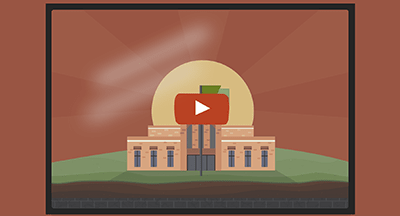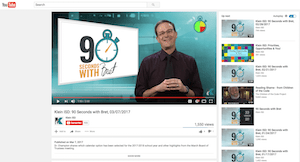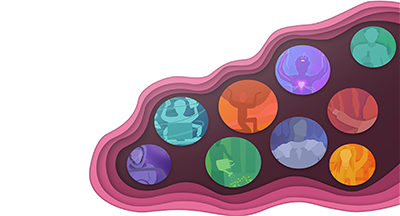
Watch the video:
And here's the transcript:
Kids are under pressure from all angles: over 18% of children are obese and 20% suffer from mental illness. They face increasing inequities as a result of the growing socioeconomic divide. And, for generations, education policy has placed a premium on test stores and accountability, to the detriment of each student's unique abilities.Cue the concept of "whole-child education." It's a term used to represent the necessary evolution of our school systems beyond a traditional, academic focus. This approach nurtures several facets of child development, starting with health: both physical and mental.
On the physical front, schools have embraced strategies to promote wellness, especially by improving K-12 food service. What was once an assembly line of low-cost mystery meals is now a central part of district operations. From full-service breakfasts to healthy, locally-sourced lunch line options, food has become more than an afterthought. Some innovative districts have even found ways to feed students after school and during summer. Why? Because well-nourished bodies translate to active minds.
But wellness is just the beginning. Many districts have instituted comprehensive frameworks to support whole-child education, including three popular methodologies: Positive Behavioral Interventions and Supports, or PBIS, emphasizes encouragement and positive behavior over punitive reactions. Response to Intervention, more commonly known as RTI, helps students get and stay on track through personalized and data-driven instructional methods. Multi-Tiered Systems of Supports, or MTSS, often incorporates both RTI and behavioral interventions, including those related to attendance. Now, keep in mind, these terms may be used interchangeably depending on where you are.
As for curriculum and instruction, personalized, customized, and project-based learning are all neatly aligned with whole-child initiatives, so it's no surprise to see the explosion of interest in these types of approaches. When speaking to curriculum and instruction leaders, the common refrain we hear is a commitment to identifying and providing the best options for every student. Whether that means mastery-based programs for kids who would otherwise feel stunted, blended learning opportunities for those who don't thrive in a traditional environment, or projects requiring practical application of skills, the end result is the same—students are more likely to feel supported on the most fundamental of levels.
As you might have guessed, whole-child learning works best when families are invested, too. That's why it's so alarming to see the results of a recent Gallup poll, which shows just twenty percent of parents were fully engaged with their child’s school. I won't get into too much detail here, but I will happily direct you to skyward.com/parentengagement, an epic library of research, resources, and success stories from school districts on the topic of parent engagement.
The final, familiar component to our exploration of whole-child learning might be the easiest to overlook: simply put, it's the duty of the school system to provide a challenging academic environment. Take all the most common buzzwords of the past decade (think rigor, standards, and agency) and blend them together with the understanding that the whole child is only served when the child is adequately prepared for what comes next. High school graduation cannot be the ultimate goal of K–12 education.
And that, my friends, is what whole-child education is all about. It's a monumental ideal for schools to work toward, knowing there is only so much time in the day and only so much funding on the way. Your challenge is to figure out how to make it work despite all the obstacles. How are you doing so far? Are your students able to shine? Are you doing right by the whole child?
Thanks for joining us. Stay tuned for more from the intersection of technology, culture, and leadership.
Follow-up Resource: Tune in
Won't you join us? Enter your email below to receive monthly updates from Advancing K12.WHAT'S NEXT FOR YOUR EDTECH? The right combo of tools & support retains staff and serves students better. We'd love to help. Visit skyward.com/get-started to learn more.

|
Erin Werra Blogger, Researcher, and Edvocate |
Erin Werra is a content writer and strategist at Skyward’s Advancing K12 blog. Her writing about K12 edtech, data, security, social-emotional learning, and leadership has appeared in THE Journal, District Administration, eSchool News, and more. She enjoys puzzling over details to make K12 edtech info accessible for all. Outside of edtech, she’s waxing poetic about motherhood, personality traits, and self-growth.




